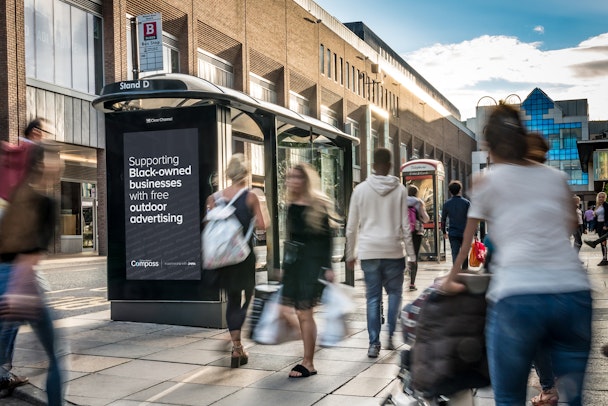‘Digital is our friend': Clear Channel UK MD explains OOH rebound
The out-of-home (OOH) advertising industry rode out the pain of the pandemic and modernized its inventory and buying processes to better compete with digital channels. The Drum probes Richard Bon, UK managing director and Europe commercial lead of Clear Channel, after it supersedes 2019 revenue levels.

Clear Channel’s finances have returned to 2019 health after a calamitous few years
Clear Channel is one of the biggest outdoor advertising companies in the world, and Bon manages its presence in Europe. Globally, the business counts 500,000 print and digital displays in 26 countries. 17,000 digital displays are in international markets – some 2,000 of these (excluding airports) are in the US. The UK, where Bon is based, remains one of the most mature digital markets.
Bon notes that Clear Channel’s finances have returned to 2019 health after a calamitous few years of lockdowns and reduced footfall with a toolkit of new digital capabilities. He thinks it can be the “poster child” for how to run contextual advertising campaigns as online advertising moves away from targeted advertising due to consumer sentiments around data protection.
On the recovery, he says: “We’re lucky. Audiences are back ... but in different places. We’ve also found that digital is our friend – we can digitize the screens, digitize the data and digitize the sales channel.”
Clear Channel’s digital journey has been long and filled with lessons. Its development has thrown up some surprises. “A few years ago, if you’d asked me about the rise of digital inventory, I’d have been excited about bringing in video and motion.”
But that turned out not to be digital out-of-home’s (DOOH) strength. “It turns out that communities and local authorities don’t really want that. OOH’s new superpower is flexibility. You can now sell a screen for an hour, opening up the doors for contextualization.”
On the classic print formats, campaigns can last from one week to four. Naturally, more sites are financially suitable for a digital upgrade. “[Classic] is brilliant for brand building, but probably not ideal if you’re a supermarket and you want to dial up by the end of the week, or if you’re a bank going loud at the start of the week when people are doing life admin. When we first went digital and became more flexible we started seeing a lot more targeted moments.”
As well as getting the timing right, advertisers are now also thinking about how to make the most of context. For some that’s the weather – ice-cream and cider sell well during hot spells, hay fever remedies during high pollen counts, and outdoor wear and hearty soups during the winter. Before a storm, a home insurance company may want to dial up its presence. And we’ve seen clever contextual ads around airports pointing to the planes in the sky.
“Everyone’s got their own data and triggers.” He’s also noticing that OOH as a data-driven broadcast channel interacts well with the private screen in the pocket, the mobile. People do search the ads they see, they scan the QR codes, and campaigns can extend to the devices of people geographically likely to have seen an ad.
Bon says: “OOH is nestled beautifully in the middle of broadcast and digital. It’s tapping into the best of broadcast, which is around effective cost per reach, the trusted environment. But there’s also now the idea of being more data-led, having intelligent planning with more targeted reach like we’ve seen in digital.”
But why not make all the screens digital if digital is the key to the future?
Bon laughs.
“There are so many pressures, some of them are economic. The reality is that screens are still quite expensive, but the biggest issues come from our council and advertising partners.”
Local authorities are being sold the somewhat more intrusive digital screens by being told that companies such as Clear Channel will erect fewer screens if they can make some of the more valuable, high-density areas more cost-effective. And that means being able to attract more bidders per spot and enabling them to place smarter campaigns.
“With this, you can remove some of the ads in the more residential areas and refocus some in the large city centers where there’s more retail. Councils are happier with that.”
As for the economics, Bon’s been surprised by the performance of some sites, even those he had doubts about. He’s found that brands have come aboard faster than he would have predicted, partially benefiting from the medium greatly showing its utility during the pandemic with the council and government messages.
He’s still not certain what the perfect DOOH ad will look like in the future. He sees the digitization of the screens as the first stage, but is excited to see how programmatic buying can help advertisers deliver contextually-relevant messages at space and do extremely clever campaigns with their data.

